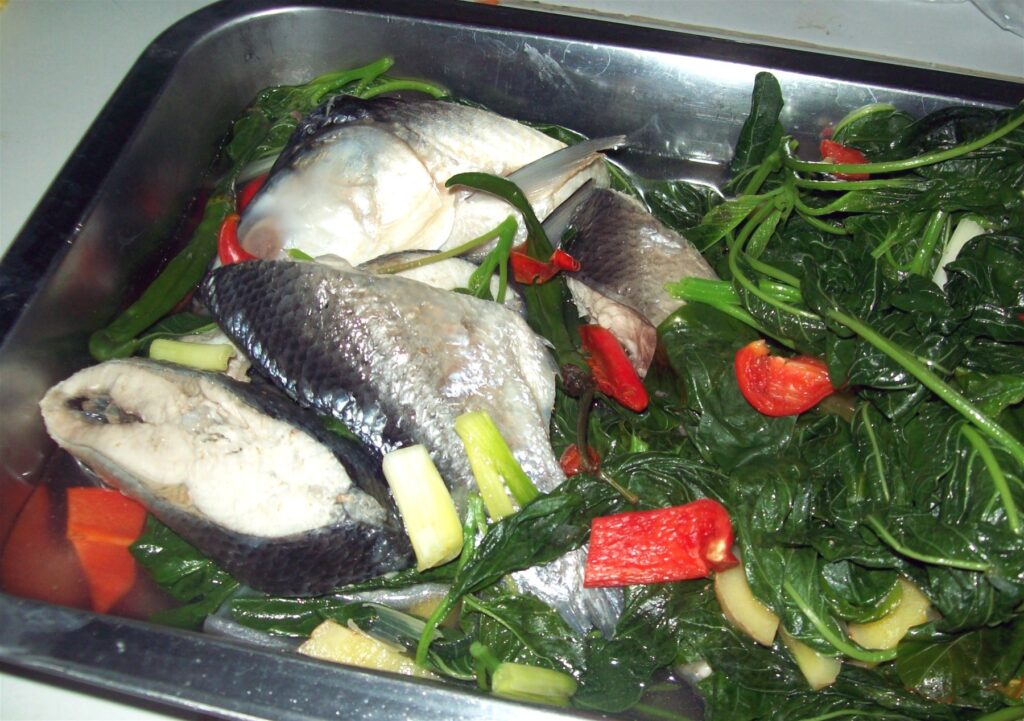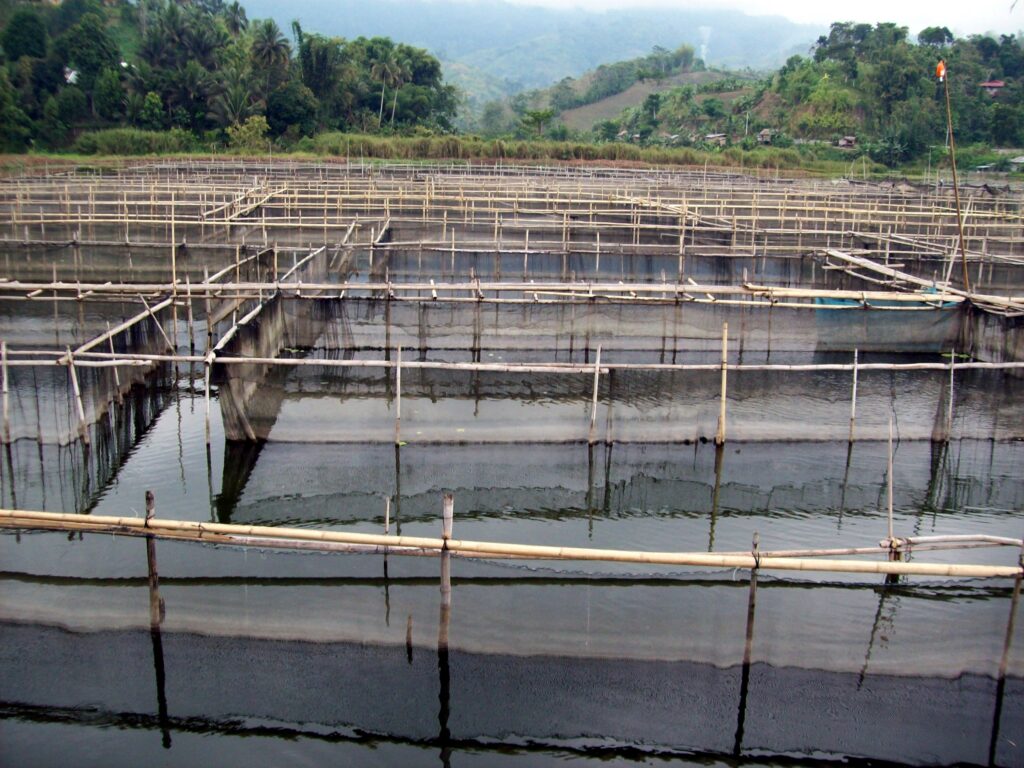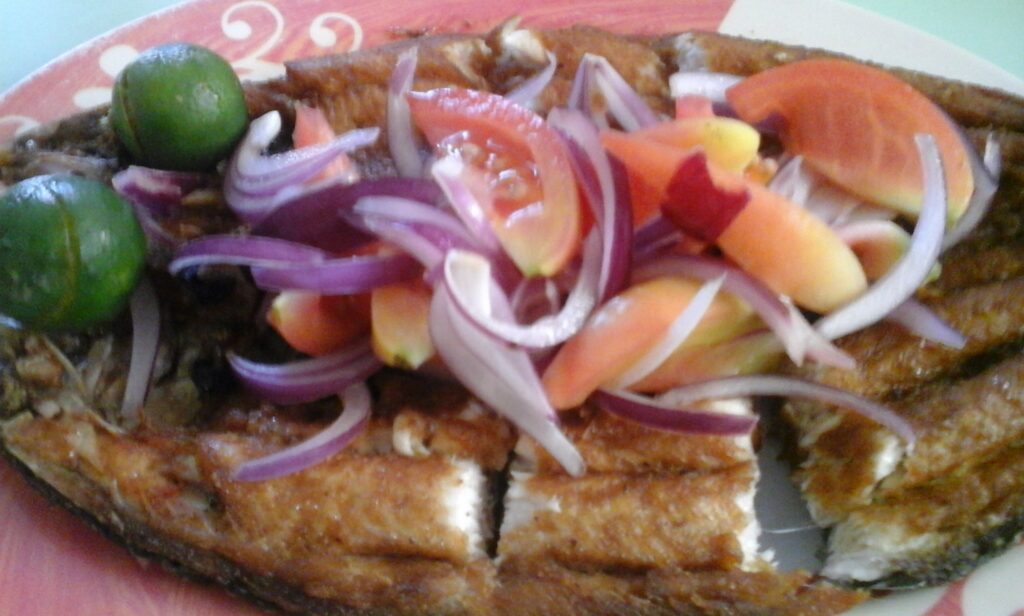A SECOND LOOK AT THE COUNTRY’S FISH ICON
Text and Photos by Henrylito D. Tacio
Bangus (known in the science world as Chanos chanos) may be the country’s national fish but it’s unofficial. There is no law that states it is, unlike those of sampaguita (flower), Philippine eagle (bird), and narra (tree).
But despite this fact, the sleek and silvery milkfish (as it is also called) is still the most favorite fish among Filipinos. Bangus is the most preferred fish because of its mild, sweet flesh, and its melt-in-the-mouth belly fat.

The popularity of bangus can be gleaned in such recipes as bangus en tocho (fried bangus served with a sauce of any of the following: tahure, tokwa, or tausi), bulanglang na bangus (with eggplants, ampalaya, sitao, malunggay, onion, tomatoes, rice washing and bagoong), rellenong bangus (formerly a party dish; now available even in school cafeterias and malls), and bangus lumpia.
The popularity of bangus even extends to other countries. The Philippines has been exporting bangus to the United States, Middle East, England, Canada and Japan. It exports bangus in different forms such as smoked, dried, marinated, frozen and canned products.
“We export bangus to countries where there are a lot of Filipinos and overseas foreign workers,” said Dr. Rafael D. Guerrero III, former executive director of the Philippine Council for Aquatic and Marine Research and Development (PCAMRD).
For a very long time, the Philippine aquaculture industry was virtually synonymous with bangus culture as it was introduced into the country 400 to 600 years ago. “The backbone of Philippine aquaculture” is how bangus farming has been regarded by most fishery experts.
The Philippines is one of the top bangus producers in the world, along with Indonesia and Taiwan. Bangus can be raised anywhere in the country. It is farmed in brackishwater, freshwater and marine water.
Bangus is most closely related to carps and catfishes. It occurs in the Indian Ocean and across the Pacific Ocean, tending to school around coasts and islands with reefs. A warm water species, it prefers water temperatures between 20-33 degrees Centigrade.
Bangus is one of the most studied fish in the world. Scientists have found that they spawn only in fully saline water. Females spawn up to 7 million eggs, which hatch in about 24 hours. Spawning and fertilization take place at night. The frequency of spawning per year is still unknown.
Eggs and larvae are pelagic up to two to three weeks. In nature, the larvae seek out clear coastal and estuarine waters warmer than 23°C with 10-32 parts per thousand salinity and abundant phytoplankton. Incubating eggs and newly hatched larvae are transported to the shore by currents where they are gathered by people in brackish waters such as shallow sandy areas, mouths of rivers, and lagoons.
Older larvae migrate onshore and settle in coastal wetlands (mangroves, estuaries) during the juvenile stage, or occasionally enter freshwater lakes. Under natural conditions, larvae and fry migrate to tidal pools and settle in them for one month until they become juveniles, then migrate into lagoons, lakes and shallow waters until they reach adolescence before returning to the sea for further growth and sexual maturation.
Raising bangus can be done employing different production systems in freshwater and in brackishwater. “Depending on the available resources and level of management, the culture methods can vary from the traditional or extensive system, the modular or semi-intensive to the intensive system,” according to Milkfish: A Basic Domestic Need Commodity, a primer published by PCAMRD.

The semi-intensive system is an improvement of the traditional system where fingerlings are stocked at a higher density. With natural and artificial feeds, bangus fingerlings are stocked at densities of 6,000 to 12,000 per hectare.
With dependence on natural food in the traditional system, low stocking densities of 1,000 to 3,000 fingerlings per hectare are applied. In this method, the culture period is longer thus allowing only one or two croppings a year. The modular pond system, on the other hand, allows a continuous operation and makes possible four to six croppings per year.
To make fishponds and fish cages productive throughout the year, adequate supply of bangus fingerlings is necessary. “Historically, milkfish fry abound in the country, especially during the fry season,” the PCAMRD primer states. “During recent years, the number collected has been dwindling.”
Normally, bangus fry appears in different places and various seasonal peaks. Areas like Southern Leyte, Western Samar, Bohol, Negros Oriental and Occidental, Antique, and Iloilo have two peak seasons: March to July and October to November. Provinces like Cotabato and Zamboanga del Sur have fry available year-round.
Livelihood Options for Coastal Communities, published by the Silang-based International Institute of Rural Reconstruction, says peak gathering days occur during high tides after two or three days following a new moon or a full moon. The gonadosomatic index (GSI) or peak-spawning season of bangus starts in March to June and drops in August to September.
During the breeding season, the rising GSI value coincides with rising seawater temperature. Spawning regularly occurs among five- to seven-year-old female breeder (sabalo) in the wild. Fertility is about 300,000 to one million eggs per kilogram weight of sabalo.
Several bangus fry collection methods are practiced in the Philippines. This includes fry barriers or fences, seine nets and “bulldozer” nets.
The collected bangus fry are placed in well-ventilated containers, preferably wooden vats or big earthen jars filled with clean brackishwater. The containers are kept in cool areas. Overexposure to sunlight is avoided or the fry dies. Also, the fry are brought to the concessionaires’ buying stations without delay.
The lack of fry and fingerlings was cited as one of the many problems that beset bangus production in the country. To save the bangus industry from downfall, some have imported fingerlings from Taiwan and Indonesia; although others thought this option was not practical as the fry were very expensive.
Enter Finfish Hatcheries, Inc. (FHI), the first and largest commercial fry hatchery in the country. It sells bangus fry and fingerlings, among others. “We have been in the bangus fry production business since 1997,” points out Rene B. Bocaya, FHI’s assistant vice-president for sales.
Its hatchery is in barangay Lun Masla of Malapatan in Sarangani Province. Here, more than 10,000 breeders are maintained and managed to produce bangus eggs on a daily basis throughout the year. The eggs are collected, cleaned and hatched. The hatchlings are grown to the marketable sizes in 18-21 days in larval ponds. During the growing period, they are fed with a mixture of planktons and commercial feeds.
The breeders are 50% males and 50% females. Sexing is a tedious work as male and females have to be chosen carefully and tagged. Some breeders have already reached the age of 25 and yet they are still breeding in groups.

It takes 5 years for a bangus to mature sexually. FHI selects breeders for commercial production only when they are 8 years old. A sabalo can produce seven kilos of eggs in one year. And one kilo consists of 750,000 eggs.
Bangus spawns in ponds in frenzy at night. The sabalo release the eggs while the males discharge the milt. Fertilization happens externally in the pond water. There is no need for hormone induction for mature breeders. The eggs are collected in nets in the early morning. They are cleaned and placed in the larval ponds immediately.
The bangus eggs hatch in the ponds within 24 hours. The hatchlings feed on the yolk sac for about 2-3 days. They undergo morphological transformations. As first feeds, the larvae are supplied natural food in a mixture of zoo- and phytoplanktons. Commercial feeds are provided in the last quarter of the production.”
According to FHI, more Filipino farmers are now seeding their ponds and cages with bangus fry being sold by FHI, which has major dealers in Luzon, Visayas and Mindanao. It maintains sales offices in Makati, Bacolod, Iloilo, and Alabel, Sarangani, its head office. For further details, readers can visit its website: www.saranganifry.com.

